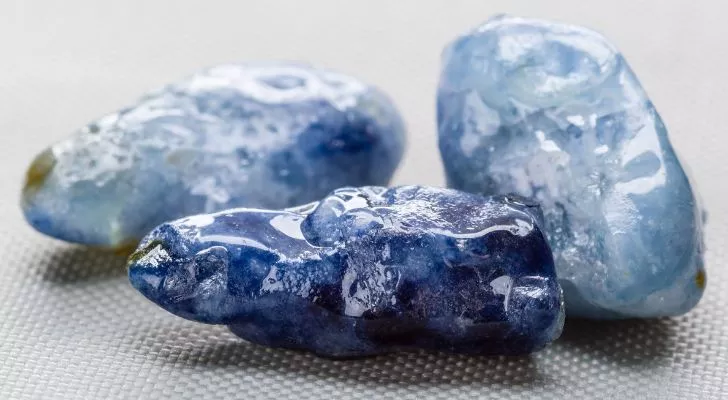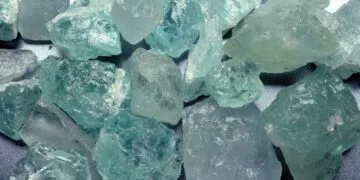It was once used as a seal by King Solomon of the Bible, and the largest ever found weighs 683 pounds (310 kg).
Napoleon Bonaparte also gave one to Josephine as an engagement ring.
Its name, coming from the Greek word meaning “blue stone,” has been spelled in dozens of different ways over the past seven centuries. It was thought to ward off evil and prevent sailors from drowning.
What is it? The sapphire, of course! Named the birthstone for September in 1912, this favorite gem has plenty of stories to tell!
Although usually thought of as blue, sapphires come in a rainbow of hues. Sapphires in any color but blue are known as “fancy sapphires” and are called according to their color: yellow sapphire, pink sapphire, and purple sapphire.
The only color you’ll never find in a sapphire is red because a red sapphire is called a ruby. Rubies and sapphires are identical, aside from the difference in trace minerals.
Sapphires are made of aluminum and oxygen, which combine to form a mineral called corundum. Most corundum is cloudy with flaws, but rare glass-like pockets of pure gem-quality corundum are the source of sapphires.
Not only can sapphires be found in every hue, but they are also found in every shade, from light to dark. Different mineral impurities cause variations in the colors of sapphires. For example, titanium results in blue sapphires; chromium gives the pinks and reds, and tiny traces of iron result in yellows
The rarest color and the most valuable sapphire is a pinkish orange. This is called a padparadscha sapphire, named for an aquatic salmon-colored lotus blossom found in India. These rare gems are found only in Sri Lanka, Madagascar, and Tanzania.
Most other gemstones are based on some form of silicon, but sapphires, rubies, and emeralds are all based on corundum and are never found where silicon is present. This makes these three gemstones the most sought-after jewels.
Sapphires, rubies, and emeralds generate more revenue and economic activity than all the other gemstones (aside from diamonds) combined.
Minerals are measured on the Mohs hardness scale, named after the German mineralogist who invented it. Talc is the softest mineral measuring 1; diamond is the hardest, measuring 10. A diamond-like crystal called moissanite comes in at 9.5. Sapphires and rubies measure 9, making them the third hardest mineral in the world.
Corundum is so hard that it’s used in many industrial applications, such as abrasives for grinding and polishing, including sandpaper and emery boards, cutting and drilling tools, and even toothpaste!
Lab-grown white sapphires are likewise widely used for such things as optical lenses in telescopes and microscopes, scratch-resistant covers for Swiss watches, for high-durability windows in Apple watches, and in barcode scanners and lasers.
Because sapphires are denser than diamonds, they weigh slightly more ounce for ounce, so a one-carat sapphire is a bit smaller than an identical one-carat diamond.
In the 6th century, the Pope required all cardinals to wear a sapphire on their right hand, which was designated the “blessing hand.” By the 12th century, the practice was encouraged because it was thought that sapphires suppressed carnal desires and promoted chastity, which was important for celibate clergy.
Some cultures restricted the wearing of sapphires to royalty, which may be where the term “royal blue” originated.
One of the most famous sapphires is the 12-carat blue engagement ring Prince Charles gave to Lady Diana. Prince William inherited it when she died, and it’s now worn by his wife, Kate Middleton.
The sapphire engagement ring Napoleon Bonaparte gave to Josephine sold for almost a million dollars in 2013.
The Black Star of Queensland is a 733-carat sapphire found by a 12-year-old boy in the 1930s in Australia. The family used it as a doorstop for years before discovering its value. His father sold it for US$18,000 in 1947 (about a quarter million in today’s dollars). Today it’s been carved into an oval about the size of an egg and is worth an estimated US$88 million.

Several months have more than one birthstone to represent them. However, September has only the sapphire.
Because it is so resistant to scratches, it’s an excellent gem that can be worn daily without worry.
Its popularity as an engagement ring has soared because of its beauty and durability.
Lucky are those born in September!


















